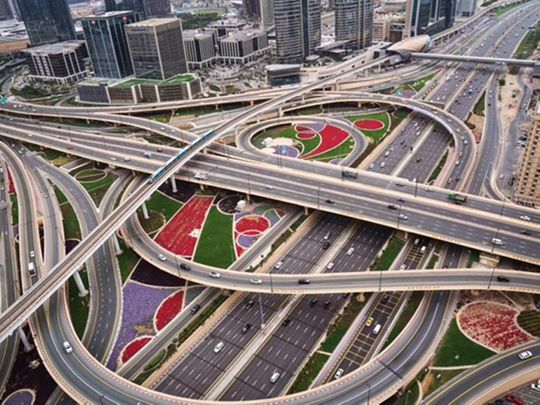
Al Khail Road is one of the city’s busiest highways – what was once seen as a slightly more roundabout alternative to Sheikh Zayed Road has grown into a key thoroughfare that connects many of the city’s new and upcoming residential communities.
It’s the road that I find myself on for a fair bit of the week and, if I’m being honest, I tend to be there longer than I’d like. That’s all going to change soon with the very promising announcement of road enhancements that will cut travel time down by almost a third.
A lot of commuters are undoubtedly breathing a sigh of relief, but this change isn’t just good for them – it’s also very good news for real estate.
Migrating centre of Dubai
Dubai’s vision has always been quite urban – the city began its first major wave of expansion along Sheikh Zayed Road, leading to the establishment of areas like DIFC and Downtown, which were then neatly linked to further expansion in Dubai Marina and JLT. Downtown Dubai was positioned as the centre of the city, with road networks designed to provide easy access through it.
Back when I arrived here around a decade ago, there were a handful of residential neighbourhoods – Arabian Ranches being the most notable - that were considered to be in the far-flung suburbs of Dubai, a place that existed outside the city proper.
At the time, Al Khail Road was still fairly new and provided a limited level of access between an area like Ranches and the city’s urban centers. Within the span of that decade, we have seen the development of Arabian Ranches 2 (with Ranches 3 starting to deliver its first phase of handovers), Jumeirah Golf Estates, Mudon, Damac Hills, Dubai Hills Estate, and Tilal Al Ghaf.
It's fair to say that these are no longer ‘suburbs’ of the city. This is where the centre has shifted now, as more and more families settle into Dubai and build their lives here. And the road networks have a bit of catching up to do.
Making the city ‘smaller’
It goes without saying that location is a key factor in any real estate decision. The commute time to work and school are the most significant, as that can eat up a good chunk of one’s morning or afternoon, subject to traffic conditions. Everyone wants to live as close to their workplace as possible, which tends to upend the supply and demand dynamics of the market.
This wasn’t a huge problem for a couple of years after Covid hit. Several businesses maintained work-from-home protocols or offered a hybrid model, which made the commute a secondary consideration for home seekers. The main search criteria were centred around space and privacy.
Now that there has been a major push for employees returning to office, the calculation has changed and it’s essential to find a home that allows for easy travel to and from work.
One of the reasons that Dubai Hills Estate has seen such a huge spike in value (though by no means the only reason) is that it is less than 15 minutes from Downtown and benefits from relatively short commute times, even at peak hours. It’s why someone would opt to live in Sidra or Maple over somewhere that is a bit further out, where the commute could be up to 20 minutes longer.
Enhancing that road infrastructure will cut drive times down significantly and will, in effect, bring those areas closer to the city. In another 5 years or so, you might be able to drive from Downtown to Damac Hills 2 in under half an hour.
Boosting newer communities
As Dubai’s road networks continue to improve, that naturally increases the search radius that people would be willing to consider when looking for a new home. This is especially beneficial for newer communities like Arabian Ranches 3 and Tilal Al Ghaf, which are already attractive prospects for new buyers and tenants. Increased connectivity will make them an even better fit for many families.
Does this mean we can expect price drops in Dubai Hills as people move further out? I don’t think so.
While property values can’t keep climbing indefinitely, Dubai Hills has carved out a unique niche for itself and the people who are willing to pay premium prices are going to continue doing so. What this does mean, however, is that we may see property values go up in the communities that are currently seen as more affordable as the demand in those areas heats up.
It's going to be very exciting to see how the city continues to grow and how it adapts its own networks to accommodate that growth. These new changes will also make my own drive shorter, but that’s just a nice bonus…









